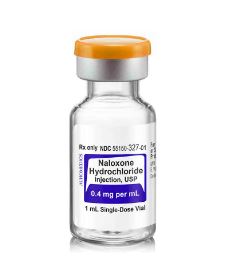Disclaimer: Early release articles are not considered as final versions. Any changes will be reflected in the online version in the month the article is officially released.
Author affiliation: Centers for Disease Control and Prevention, Atlanta, Georgia, USA (D.J. Smith, L.F. López, M. Lyman, K. Benedict); US Department of Agriculture, Washington, DC, USA (C. Paisley-Jones)
Purpureocillium lilacinum (formerly Paecilomyces lilacinus) is a naturally occurring filamentous fungus that is common in the environment, particularly in soil and decaying vegetation (1). Two strains of P. lilacinum registered in 2005 and 2021 are used as agricultural bionematicides in the United States (2,3). The fungus rarely causes human infection but can cause hyalohyphomycosis, an infection with varied clinical soft-tissue, ocular, or pulmonary manifestations. Infection most frequently affects immunocompromised persons but can also occur in immunocompetent persons. Mortality rates can reach 20% (1).
P. lilacinum infection is clinically indistinguishable from other mold infections, and the organism resembles other molds on cytology, histopathology, and culture, potentially leading to misidentification and to delayed or inappropriate treatment (1). P. lilacinum is intrinsically resistant to amphotericin B and can be correlated with poorer treatment outcomes (1,4).
Worldwide, clinical characteristics and outcomes of 101 P. lilacinum infections have been described, 31 of which were from the United States, but epidemiology of the infection in the United States is poorly understood (1). We explored P. lilacinum culture data from a large national commercial laboratory to describe this organism in the United States.
We used data from the Centers for Disease Control and Prevention’s National Syndromic Surveillance Program (NSSP) (https://www.cdc.gov/nssp/index.html), which collects data from Labcorp (https://www.labcorp.com), a major national commercial laboratory network. Labcorp transmits test orders and results for all reportable diseases in the United States to NSSP. Although P. lilacinum infection is not reportable to public health authorities, NSSP receives data on all fungal cultures performed at Labcorp because other fungal diseases are reportable (5). We identified culture results for P. lilacinum ordered during March 1, 2019 (earliest available data) through February 28, 2025.
We examined demographic characteristics, geographic location of submitting provider’s state (US Census division), specialty or setting of the ordering healthcare provider, specimen type, and time from test order to culture result. Unique patient identifiers were unavailable; therefore, we conducted analyses at the test-result level.
Figure
Figure. Rates of Purpureocillium lilacinum mold among laboratory culture results, United States. Graph shows P. lilacinumcultures per 100,000 fungal cultures by year and quarter during March 2019–February…
We identified 1,180 P. lilacinum cultures (Table; Appendix Figure 1). Rates of P. lilacinum per 100,000 fungal cultures per year increased from 56.6 in 2019 to 74.3 in 2024 and peaked at >90 in the third quarter of 2024 (Figure). Overall, male persons (68.8/100,000 population) and persons >65 years of age (89.7/100,000 population) had the highest culture rates. By US Census division, the South Atlantic (110.6/100,000 population) and Pacific (100.3/100,000 population) divisions had the highest rates. Most (52%) P. lilacinum cultures were ordered from hospital settings. Specimen type was available for 57% of cultures, among which respiratory specimens were most common (38%). The median time from collection to result was 23 (interquartile range 15.0–33.0) days.
Those commercial laboratory data suggest a recent increase in P. lilacinum cultures in the United States and a wide geographic distribution. Higher rates among male persons and older persons align with a previous study of P. lilacinum infections (1). The long time (>3 weeks) for culture growth and identification for this mold might lead to diagnostic delays and potentially inappropriate treatment (1,4).
The South Atlantic and Pacific Census divisions had substantially higher P. lilacinum culture rates than other regions of the United States. The high rates in the Pacific region could reflect a substantial uptick in cultures from that area during 2024–2025, including 60 cultures from a single facility that was the subject of a public health investigation (6). That event represented a pseudo-outbreak from environmental contamination rather than a true clinical outbreak, which is a rare occurrence. A previous P. lilacinum outbreak was linked to contaminated skin lotion (7). Two strains of P. lilacinum are used in the United States as agricultural bionematicides, PL251 registered in 2005 and PL11 registered in 2021 (2,3). Use of those bionematicides could possibly contribute to increased environmental presence and culture contamination during collection or in laboratories. Internationally, at least 1 case of subcutaneous P. lilacinum infection has been reported in association with bionematicide use (8). We could not assess environmental exposures in patients from whom the cultures in our study were derived; more data are needed on potential P. lilacinum environmental sources and their correlation with clinical culture positivity and infection risk.
Without clinical data, we were unable to determine patients’ underlying medical conditions and whether cultures represented true infection versus colonization. The most common specimen source was the respiratory tract, which can be colonized with various molds. Furthermore, nearly half of cultures were missing specimen type information, likely skewing our results; however, another study of confirmed infections found that skin was the most common infection site (1). Last, our data are a convenience sample and might not necessarily represent the entire US population.
In summary, mold infections generally are associated with substantially delayed and missed diagnoses (9). Further investigations are needed to understand the increased P. lilacinum culture rates, including examining bionematicide use, environmental changes, and clinical effects. Because P. lilacinum culture rates appear to be increasing, clinicians could consider nonculture-based diagnostic tools, such as microscopy (Appendix Figure 2), to help identify and confirm clinical infection earlier.
Dr. Smith is an epidemiologist with the Mycotic Diseases Branch, Division of Foodborne, Waterborne, and Environmental Diseases, National Center for Zoonotic and Emerging Infectious Diseases, Centers for Disease Control and Prevention. His main research interests include environmental molds, fungal neglected tropical diseases, and antifungal stewardship.

 Our Pill Pass® Drug List is only $6.99 or less and Shipping is FREE!
Our Pill Pass® Drug List is only $6.99 or less and Shipping is FREE!






